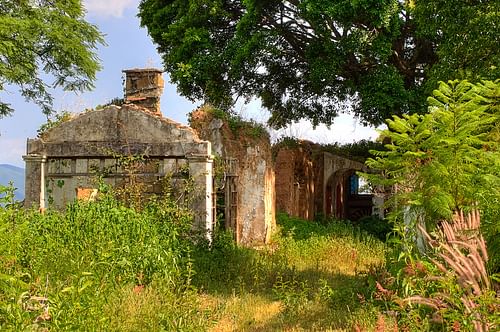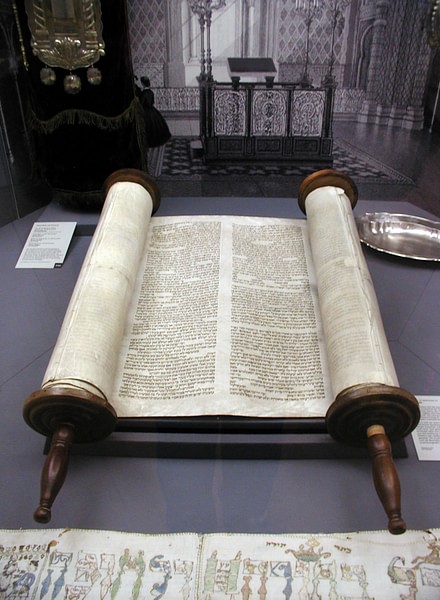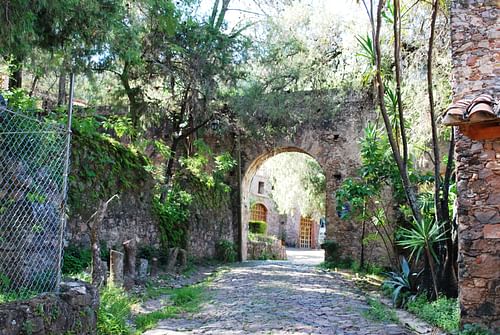Professor Emeritus David Gitlitz is one of the world’s leading experts on Jewish-Catholic interactions in Iberia and the Americas. While initially drawn to the literature of the Spanish Golden Age as a student at Oberlin and Harvard, the history and culture of Spanish and Latin American Jewry later caught Gitlitz’s interest. He has since written extensively on Iberian Jews, the conversos, and pilgrimage. His Secrecy and Deceit: The Religion of the Crypto-Jews, fruit of extended visits to Inquisition archives in Madrid and Mexico City, won the Jewish Book Council’s 1996 National Jewish Book Award in Sephardic Studies. Gitlitz’s latest publication, Living in Silverado: Secret Jews in the Silver Mining towns of Colonial Mexico, traces the unusual lives and fortunes of Jewish migrants working in colonial Mexico’s silver mining towns during the 1500s. James Blake Wiener spoke to David Gitlitz from his home in a village in the Mexican state of Oaxaca about those Jews who found adventure and mixed fortunes in Nueva España.
JBW: What ignited your interest in the secret Jews of Mexico?
DG: Lots of scholars, including me, have been fascinated by the Spanish and Portuguese conversos who came to the Americas in the 1500s. In a way, these people were doubly immigrants. Before 1492, they could live openly in Iberia as Jews. Then, those who opted not to accept expulsion found they had immigrated, as nominal Christians, into a comprehensively Catholic, Iberian world. They had to learn and mimic its ways in order to survive.
Later, often because of Inquisition pressure, some conversos decided to leave Spain and Portugal. Those for whom their sense of Jewish identity was prominent often immigrated to safe havens in Europe where they could still practice Judaism more or less openly. Some went to the Americas, even though it was still dominated by the Catholic Church. The New World was exotic and offered the immigrants extraordinary economic opportunities, but at great risk and the cost of still having to keep their religious beliefs and practices rigorously secret.
JBW: What sort of Judaism did these immigrants from Portugal and Spain bring with them to colonial Mexico?
DG: Some conversos who still self-identified as Jews had been instructed in Judaism by parents or grandparents who had grown up in a pre-1492 Iberian world still rich in Judaica: synagogues, mikvoth, books, and so forth. Others had learned only those bits of Jewish lore that could be transmitted orally. A few immigrants came to Mexico after a stay in a European city like Ferrara in Italy, which still had a functioning, open Jewish community. And then some conversos really wanted to be Catholic. In other words, they brought varied knowledge, varied practice, varied commitment, and all of it framed and molded by a generation or two of immersion in a Catholic milieu.
JBW: How did they sustain their Jewish identity?
DG: The ways were many, and complex; but in short, by hanging out with their co-religionists in Mexico City and sharing orally the bits of knowledge they had brought with them. And by reading Christian material that featured stories from the Hebrew Bible.
JBW: Are you saying that even though the Mexican Inquisition excelled in finding "Judaizers", the converso community in Mexico City became so large that members could gather together for the Sabbath and find spouses within the community?
DG: Exactly. By the last decades of the 1500s, there may have been about 200 active Judaizing conversos in Mexico City. They constituted a critical mass—a large informal minyan or public prayer group—whose centripetal force helped to maintain some cohesion in matters of belief, practice, and community mores. Although they differed widely as individuals, the patterns of their life stories tend to be quite similar. Except for the miners.
JBW: Tell us about those conversos who migrated to mining centers like Taxco, Pachuca, and Tlalpujahua. Were they motivated by adventure, opportunity, or fear of the Inquisition?
DG: It was not because they feared the Inquisition more than everyone else. It was because they lived their lives differently, lives that had different long-term outcomes. The men who headed out into the mountains and the frontier mining camps tended to be extremely ambitious; dreamers, risk-takers, gamblers; men not easily bent by community pressure; people for whom the lure of silver was a drug. They were not all pick-and-shovel miners; some were refiners, outfitters, and financiers. All of them were players in the industry that sustained colonial Mexico’s prosperity.
JBW: How did their lives differ from those in the capital?
DG: For one thing, Judaism tended not to be the biggest variable in their lives. Many took note of the Sabbath and the festivals only sporadically. They were not scrupulous about what they ate. They worked almost exclusively with Christians, and that colored their networks of friends and associates. They were often marginal to the capital’s informal minyan. Some of them, like Tomás de Fonseca in Tlalpujahua, sustained their Jewishness by being voracious readers. Others, if they had a converso companion on their journey to and from their village, would discuss Jewish topics on the road. In the village, they might entertain an occasional visitor, and when they were in the capital, they looked up their converso acquaintances, often lodging with them. As for their sex lives, most had liaisons along the way, and most sired several children with indigenous or Mestiza women. When they did marry, it was often not with conversa women. Perhaps the most interesting finding in my study was that, unlike the city folk, almost none of the Judaizing conversos of this group transmitted their sense of Jewish identity to their children.
JBW: Why did you choose to explore the personal stories of these converso miners in Living in Silverado?
DG: People tend to think about the conversos in terms of generalizations. But these people were first of all individuals — colorful, idiosyncratic characters, loners, odd-balls, heroes, scamps, and all of them in their own way, Jews. Any one of their biographies begs to be made into a movie.
Take the first to arrive, Gabriel de Castellanos, who came to Mexico in 1534. To get permission from the Consejo de Indias to sail, he had to swear that he and the woman accompanying him were married, which was true, although not to each other. They also had to swear that they had no Jewish or Muslim grandparents: possibly true for her, a blatant lie for him. He was a widower, and the three accompanying children were his, not hers; the child she was still carrying was only maybe his. Gabriel knew Latin, Spanish, Portuguese, and some Hebrew. In Mexico City, he opened a grammar school. Once he had earned a little money, he abandoned his 'wife' and kids and bought a silver mine and a black slave to help him work it. When that failed, he signed up to fight the Chichimeca Indians.
Another, the barely observant Antonio Díaz de Cáceres, a former sea captain and slaver, bought a mining hacienda in Taxco. When inquisitors knocked on his front door, he escaped out the back, galloped down to Acapulco, bought a half interest in a ship, and sailed to Manila and then to China. There was a shipwreck in his story, too. Eventually, he was brought back in chains from India to Mexico!
Or consider the fervently observant Manuel de Lucena, proprietor of a general store in Pachuca, who bought and sold raw silver. In his rooms next door, where he sometimes hosted visiting Judaizers, he entertained his young wife by playing the clavichord. His shop sold dry goods, mining supplies, guitar strings, and alarm clocks.
These are just three examples of many interesting figures.
JBW: What lessons can we take from the experiences of the conversos in colonial Mexican mining towns?
DG: Leaving aside the fact that thanks to the Inquisition they almost all came to unhappy ends, if by "we", we mean the Jewish people, the lesson may be that the likelihood of transmission of Jewish identity across the generations is related to habitual participation in group activities that foster that identification; in other words, by being a member, in some way, of that large informal minyan. If the "we" refers to people in general, Living in Silverado’s lesson may be that infinite are the ways to live interesting, adventurous, and fulfilling lives.
Dr. David M. Gitlitz is a writer, former provost and currently Professor Emeritus of Hispanic Studies at the University of Rhode Island. Gitlitz holds a B.A. from Oberlin College and Ph.D. from Harvard University. He divides his time among research on three broad areas: the Golden Age of Spanish literature, Spanish-Jewish history, and the cultures of pilgrimage(s). He has authored or co-authored several books on Hispanic literature, Sephardic history, and pilgrimage, including Secrecy And Deceit: The Religion of the Crypto-Jews, A Drizzle Of Honey: The Lives and Recipes of Spain’s Secret Jews (An Inquisition Cook-book), and Pilgrimage, from the Ganges to Graceland. His latest title is Living in Silverado: Secret Jews in the Mining Towns of Colonial Mexico, which sheds light on the converso presence in colonial Mexican mines and was a finalist for a National Jewish Book Award in 2019. Gitlitz is currently retired and lives in Oaxaca, Mexico.










